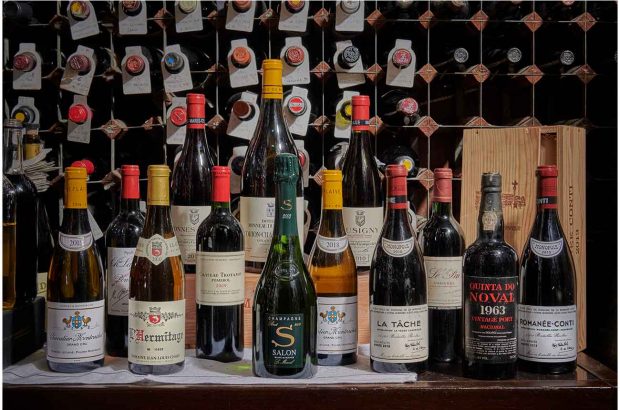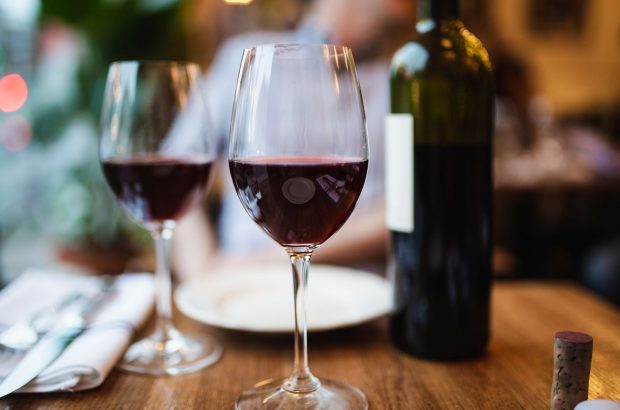The black- and red-sand beaches of this volcanic island offer a stunning backdrop to some of the world’s most extreme vineyards, writes Nico Manessis. It’s worth braving the tourist crowds for...
Santorini wine travel guide
Most people head to Santorini to experience the jaw-dropping views and ever-changing colours, seen from the sugar-cube white houses perched all along the volcanic rim of the caldera. These jagged cliffs are the product of the huge eruption that occurred around 1613 BC.
What you are experiencing is the force of nature’s catastrophic power, as well as its inexhaustible capacity for beauty. There are many sides to this fashionable destination, from the gorgeous volcanic black- and red-sand beaches and vibrant nightlife to the unique cubist, cave-like architecture.
The creamy-white pumice that covered most of the island as a result of the eruption gives rise to one of the most improbable vineyard locations. Sun and strong winds necessitated the ingenious, ground-hugging, basket-pruned method of vine training.
Santorini’s sweet Vinsanto was traditionally exported, mostly to Tsarist Russia, rich Greek industrialists and the merchants of Egypt, but the market collapsed after the Russian Revolution in 1917. Much reduced in acreage today, Santorini soldiers on, with emphasis on the mineral-laden, bone-dry expressions of Assyrtiko, and some Vinsanto.
Today, the island’s ungrafted vines amount to 1,100 hectares. Of this, 65% are planted with the Assyrtiko grape. Not content with merely surviving in this apparently hostile natural environment, this variety manages to produce a singular, bone-dry white of inimitable character.
When Assyrtiko stepped onto the world stage 15 years ago, commentators coined the phrase ‘Chablis on steroids’. They’ve come a long way since, today offering mouthwatering freshness and food-friendly salinity. Their tannic bite gives them an edge, not unlike the drama of the windswept caldera cliffs. Few wines capture such a pronounced sense of place. If wine is geography in a bottle, the fact that ‘revisiting’ the island is just a click away is modern-day magic.
Barren landscape
This lesser-known world can be discovered through Santorini’s extensive wine routes. Dotted with unique basket-shaped vine crowns, prickly pears and volcanic black rocks embedded in the creamy-white topsoil, the barren landscape presents an ever-changing, often lunar-like vista. The island is 70km2 and driving times to any winery, depending on your base, vary from 25 minutes to no longer than 45 minutes.
A short list of wineries invites discovery. Domaine Sigalas is a boutique winery, with refined, bone-dry whites – look for the creamy Kavalieros – and it’s one of the addresses championing the rare red Mavrotragano grape. It’s set to trial eggshaped cement tanks with the 2016 harvest.

Credit: Maggie Nelson/Decanter
Next stop is Venetsanos Winery, carved out of pumice on the caldera cliff edge, and rich in history and atmosphere. At its height, Santorini wine production was mostly made into Vinsanto – sweet dessert wine made from sun-dried between 1860-1920, an era when wine wineries housed in farmsteads carved into the rock – many of which are now converted to villas or boutique hotels. The terraces at Venetsanos offer one of the island’s most breathtaking views, and in the wines, nuances from their Megalochori and Pyrgos vineyards abound.
Further south, you can see what a 19thcentury canava really looked like at the Koutsoyannopoulos Wine Museum. A large part of the underground cellars have been converted into a museum and the singlevineyard Ksera Homata is one of several characterful, terroir-driven wines you can try.
Argyros Estate is a historic Vinsanto producer in a new, modern, Cycladic-styled winery. It’s a must-visit to try the island’s most significant aged Vinsantos – the 12-year-old is a particular star. This sweet wine style is a life-saver – literally. The late Mattheos Argyros, grandfather of the current namesake, used to tell of how intertwined the islanders’ lives were with grape farming. During World War II, they hid cherished casks of Vinsanto, knowing their worth. As there were no fruit trees on the island, and little or no sugar on the black market, they would dilute the wine, rich in residual sugar, with rainwater. This magic potion saved lives on the island, as it prevented hypoglycaemia in pregnant women.
If you’re looking to taste something unique, Gaia Wines is housed in an impressively built ex-tomato cannery on a black-sand beach. Each year workers retrieve 500 bottles which have spent four years submerged in the Aegean sea, 20m below the surface. Taste, with your toes not far from the surf, the different nuances derived from cellaring on land and underwater.
Nico Manessis is the DWWA Regional Chair for Greece and Cyprus, and publishes Greekwineworld.net blog
More wine travel guides:

Decanter travel guide: Cinque Terre, Italy
A paradise for walkers, this astonishing corner of Liguria reveals an age-old tradition of vine-growing and a small but thriving

Lisbon: Top restaurants and wine bars
Find out the best places to eat and drink in Lisbon...

Decanter travel guide: Ventoux, France





